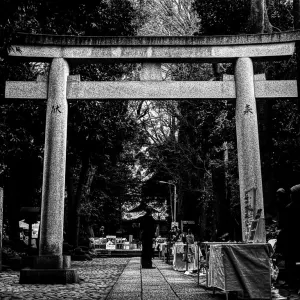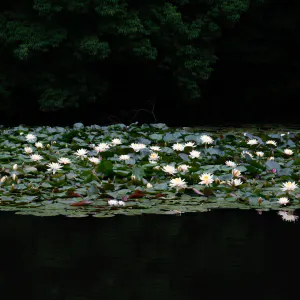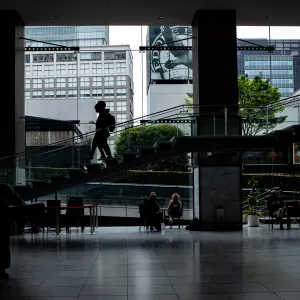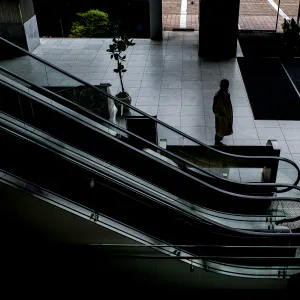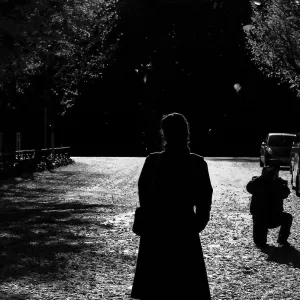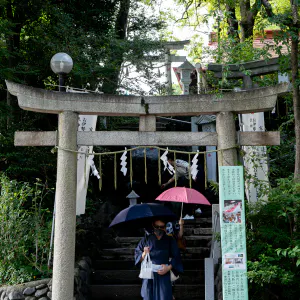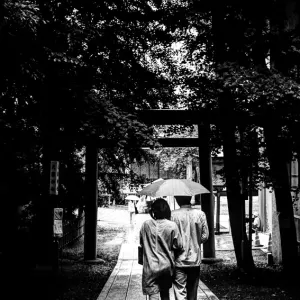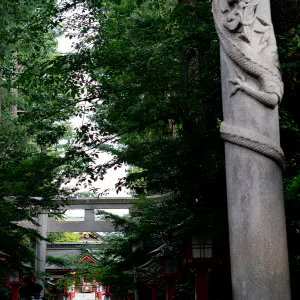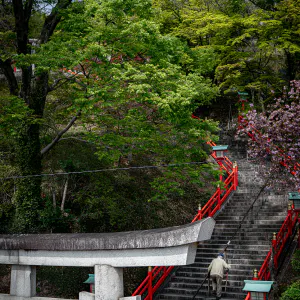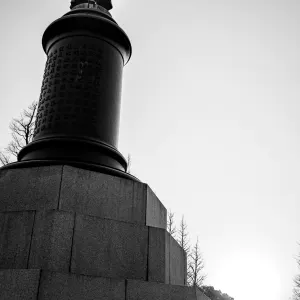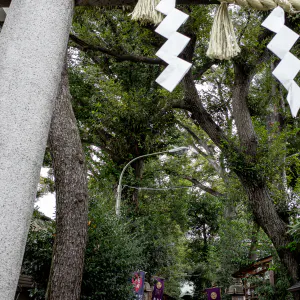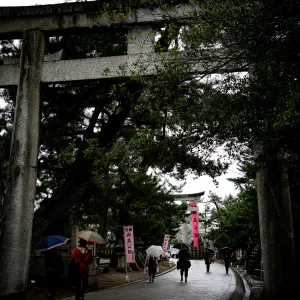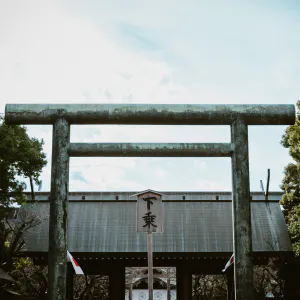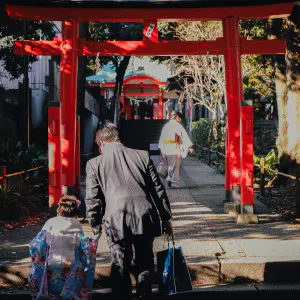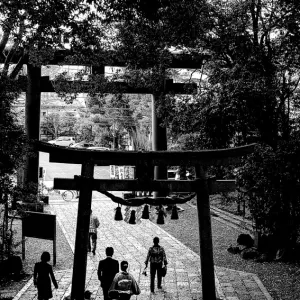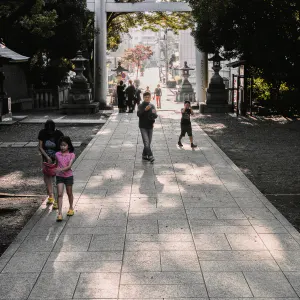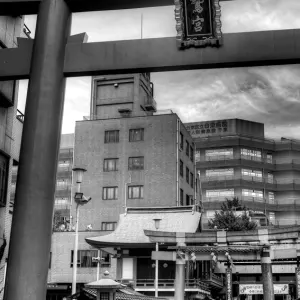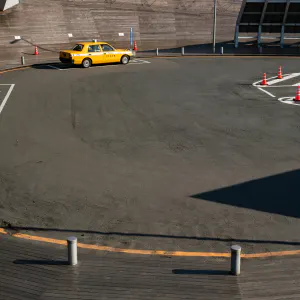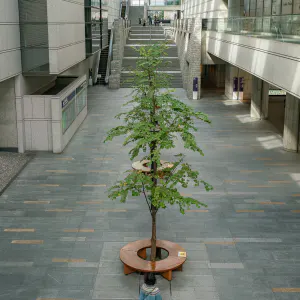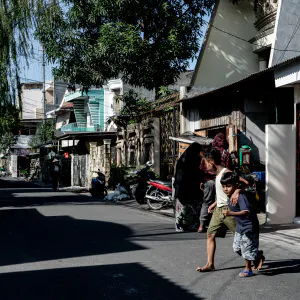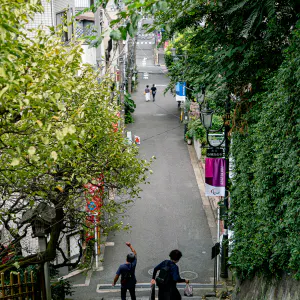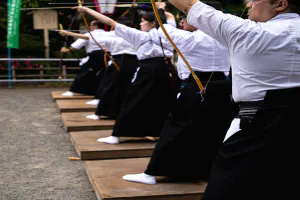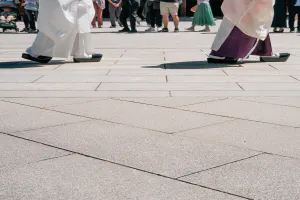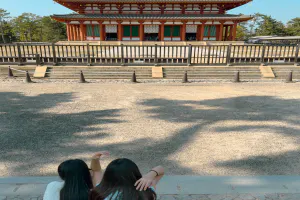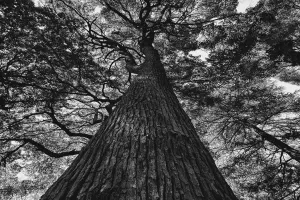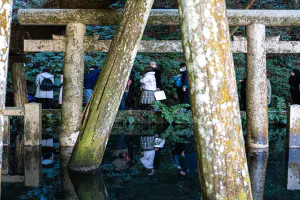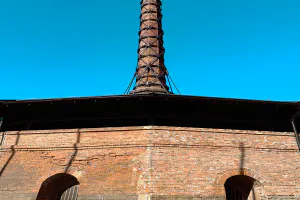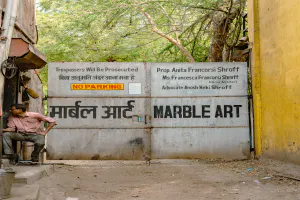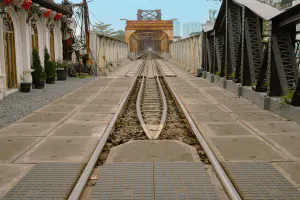The shrine of Yoyogi Hachimangu stood at the end of the approach stretching beyond the torii gate
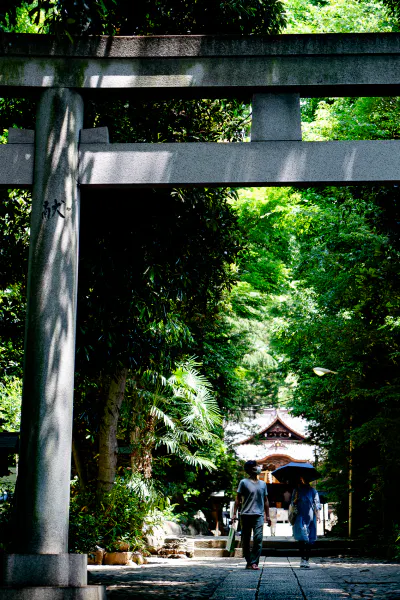
Despite its location in the heart of the city and the busy Yamate Street running right next to it, the grounds of Yoyogi Hachimangu Shrine are surrounded by silence. The map shows that only the precincts of this shrine are thickly covered with trees. Not only is it quiet, but the air feels clean and fresh as I walk through the shrine grounds.
It seems that people of long ago felt the same way as I do, and ruins of Jomon-era dwellings have been discovered on the grounds of the shrine. Unlike today, there would have been many places to build a house, but they chose this place because it was a place with a good feeling.
It is difficult to find a relationship between a Jomon-era dwelling and a Shinto shrine built in the 1200s, if only because the air was clean and pleasant. According to Shinichi Nakazawa, however, there is a connection between the seemingly mere coincidence of the dwelling site and the Hachimangu Shrine.
He says that places considered sacred by people since the Jomon period were elevated to the status of shrines as time passed by and that this type of shrine is often enshrined as Hachiman in Tokyo. Indeed, this shrine is also a shrine dedicated to Hachiman. It is said that the set of three deities often enshrined as the three Hachiman deities, Empress Jingu, Emperor Chuai, and Emperor Ojin, is similar to the structure of gods in the Jomon period. If this theory is true, then this precinct has been a sacred place since the Jomon period. Although there is no record of it, it would be a wonderful thing to think that I am standing in a place that has been revered by people for thousands of years.
I don't know if this is true or not. But it is true that I felt refreshed as I walked through the large torii gate and through the dense trees toward the shrine.
| Aug 2022 IN THE CITY TOKYO | |
| APPROACH SHRINE TORII UMBRELLA YOYOGI |
PHOTO DATA
No
12345
Shooting Date
May 2022
Posted On
August 8, 2022
Modified On
August 11, 2023
Place
Yoyogi, Tokyo
Genre
Street Photography
Camera
SONY ALPHA 7R II
Lens
ZEISS BATIS 1.8/85
